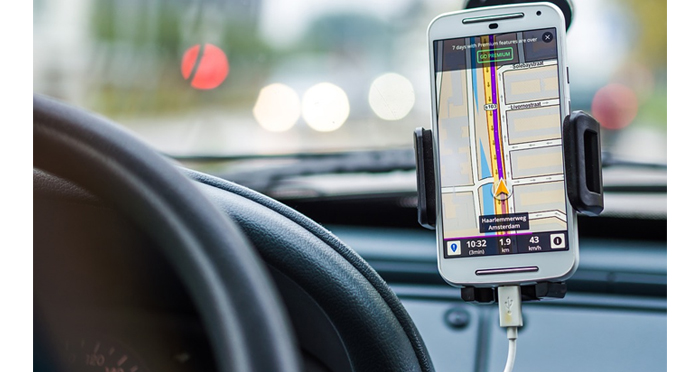Distracted driving is a dangerous behavior that should be avoided, but recent studies and data point to startling increases in auto crashes as well as pedestrian deaths, which are the highest in 20 years. Insurers note that while various forms of distraction are contributing factors to these increases, smartphone use is largely to blame.
Fatal auto accidents across the nation increased by 7.2 percent in 2015, according to the National Highway Traffic Safety Administration (NHTSA). The Oregon Department of Transportation reports that someone in Oregon is injured by distracted driving behavior at least every three hours. Also, A new observational study conducted by the Washington Traffic Safety Commission (WTSC) reported that 71 percent of the time, when distracted driving was observed in the study, it involved the use of a mobile device (cell phone).
The increase in auto crashes is impacting insurance costs, as well. Nationally, the average expenditure for auto insurance has climbed to $926, and the Washington Insurance Commissioner’s office reported that on average, auto insurance rates among the state’s top 20 insurers increased 5.9 percent over the past year. In that state, the Legislature responded to the data and tragic stories from the families of crash victims by enacting new legislation to increase penalties for calling, texting, scrolling, viewing videos or other activities involving electronic devices while driving or briefly stopped. That bill (SB 5289) currently awaits a signature from WA Governor Jay Inslee.
The world also has become a more dangerous place for pedestrians. A preliminary report by The Governors Highway Safety Association (GHSA) estimates 6,000 pedestrian deaths in 2016, the highest number in more than two decades. Pedestrian fatalities have increased 11 percent since 2015, and 22 percent since 2014. GHSA is pointing at the growing use of smartphones, by both drivers and pedestrians, as the common cause of pedestrian deaths.
“The cause-and-effect impact of distracted driving – and in particular, the use of mobile devices while driving – are evident in the data,” said Kenton Brine, NW Insurance Council President. “Crashes and fatalities – even car vs. pedestrian accidents – are increasing, and with each new tragic accident come other costs – including higher insurance rates.”
Insurers say loss costs – payments made to treat injuries, repair damaged vehicles and property and defend insured drivers in legal actions – have jumped 16 percent over the past two years. While individual companies weigh rating factors differently, loss costs are typically reflected in premiums paid by consumers.
All distractions are a reason for concern, but cell phone use while driving is the riskiest distraction for drivers. According to WTSC, talking on a cell phone increases crash risk by three times. Entering text into a smartphone increases crash risk by 23 times, and drivers talking on the phone, even hands-free, can miss up to 50 percent of what is going on in their driving environment.
It only takes a few seconds of distraction for a driver to cause a fatal crash. The NW Insurance Council and traffic safety experts offer the following tips to help prevent distracted driving:
Distracted Driving Prevention
Turn off your phone and put it in your glove box while you are driving to avoid the temptation of answering a call or text.
If you’re a passenger, hold the driver’s phone.
Don’t text or call a friend or loved one if you know they are driving.
If using a GPS on your phone, plug in the address before you start the car and use a mounted phone holder.
Talk to family members, especially teen drivers, about the risks of cell phone use. Model responsible behavior by not using your phone while driving.
If you need to call or text someone while driving, ask a passenger to type the text or make the call. If you don’t have passengers, pull off the road in a safe location before using your phone.
Don’t eat or drink while driving, and all personal grooming should be done at home and not while driving.
Consider installing an app that can disable texting and hold calls while you’re driving.
Ask your teen to sign a parent-teen driving contract or agreement that details the promises, rules and consequences of driving so everyone is on the same page. One example of such a contract is available on the CDC’s website.
As a pedestrian, it’s important to know what’s going on around you at all times, even at home. A report by The National Safety Council (NSC) shows that 52 percent of cell phone distracted walking injuries happen at home, and distracted walking incidents involving cell phones accounted for more than 11,100 injuries between 2000 and 2011.
You never know when a driver could be distracted and not see you walking. Here’s a few tips for pedestrians to keep in mind.
Distracted Walking Prevention
Never use a cell phone or other electronic device while walking. Keep your head up and stay alert to your surroundings.
Look left, right and left again before crossing the street. Looking left a second time is necessary because a car can cover a lot of distance in a short amount of time.
Make eye contact with drivers of oncoming vehicles to make sure they see you.
Be aware of drivers even when you’re in a crosswalk; vehicles have blind spots.
Don’t wear headphones while walking.
Never rely on a car to stop.
Children younger than 10 should cross the street with an adult.
Only cross at designated crosswalks.
Wear bright and/or reflective clothing, especially at night.
For more information about distracted driving or auto insurance, contact NW Insurance Council at 800-664-4942 or visit www.nwinsurance.org.
NW Insurance Council is a nonprofit, public-education and public policy organization funded by member insurance companies serving Oregon, Washington and Idaho.





